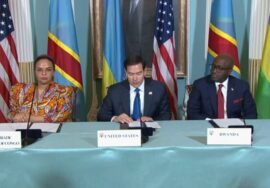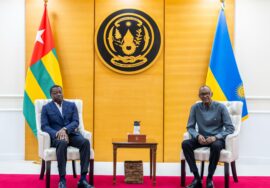
Localisation’s Moment of Truth: What Happens When Donors Step Back Too Soon?
Introduction
Localisation in humanitarian aid refers to transferring power, resources, and decision-making to local and national actors in crisis-affected areas. As formalized in the 2016 Grand Bargain, the goal was to make humanitarian responses in line with the principle of subsidiarity “as local as possible, as international as necessary.” This ambitious vision sought to empower local organisations to lead sustainable, context-specific aid efforts, enhancing resilience while gradually reducing dependency on international actors.
While progress has been made, significant challenges remain. Local actors still receive a limited share of global humanitarian funding and often operate within structures where they play primarily operational, rather than strategic, roles. Recent adjustments in donor priorities have further highlighted these challenges. For instance, the termination of over 10,000 USAID contracts worldwide in 2025 has affected critical programs in health, nutrition, and humanitarian response. Similarly, Chatham House reports the UK’s planned reduction of development assistance to 0.3% of gross national income by 2027, reflecting broader shifts in global aid dynamics.
Here I reflect on the uncertainties this evolving landscape brings for localisation’s future. Does a reduced international footprint signify localization’s maturity, or does it expose fragile systems that require deeper investment and capacity support to succeed? Are local actors adequately resourced and empowered to lead — or are they left to take on expanded responsibilities without the necessary tools?
The Promise of Localisation
Localisation was envisioned as a revolutionary shift in the humanitarian system. It aimed to rebalance relationships between international and local actors by placing decision-making and leadership directly in the hands of those closest to crises. Through the Grand Bargain, international donors committed to channelling at least 25% of humanitarian funding directly to local and national organizations. Initiatives such as the Charter for Change further reinforced the importance of equitable partnerships, emphasising that local actors should be valued not just as implementers, but as co-creators of sustainable solutions.
Localisation also aligned with broader efforts to decolonize aid, ensuring communities have greater control over interventions that directly affect them, and that humanitarian responses reflect local knowledge, priorities, and leadership.
While these commitments remain strong in principle, progress has been uneven in practice. Many local organizations continue to grapple with limited access to direct funding, capacity constraints, and exclusion from strategic decision-making processes. Nonetheless, the fundamental premise remains critical: local leadership enhances cultural relevance, operational efficiency, and long-term sustainability. As this transition unfolds, questions around how local is local also become more pressing.
The Reality of donor withdrawal
Recent reductions in overseas development assistance and shifts in global funding priorities have amplified the need to accelerate localization efforts. The recalibration of funding streams by the US, UK, and Germany has further highlighted the importance of building resilient, locally led systems (with urgency).
In many contexts, including parts of Africa, these adjustments have been particularly felt in fragile regions, where local actors are at the forefront of response efforts. Donor transitions, often shaped by domestic fiscal pressures, competing global crises, and evolving policy priorities, emphasise the need for predictable, multi-year investments that allow local actors to plan, build capacity, and adapt to changing realities.
Localisation, at its core, was designed to mitigate the impact of such shifts by strengthening local ownership and capacity. However, many local organizations remain heavily dependent on external funding and often lack the institutional infrastructure to fully absorb new responsibilities in the absence of sustained support.
Tensions and contradictions
For affected communities, reductions in external funding understandably raise concerns about the sustainability of critical programs. These concerns are not reflections of opposition to localisation, but rather a recognition that successful localisation requires deliberate investment in capacity strengthening, institutional development, and flexible funding mechanisms that enable local organisations to lead effectively.
At the same time, donors face their own challenges, balancing domestic fiscal pressures, political considerations, and evolving global crises, all while working to uphold their commitments to humanitarian principles and localization goals. True localisation does not mean abrupt disengagement by international partners; rather, it envisions a gradual, mutually supported transition where local leadership is built on a foundation of predictable investment, sustained technical support, and genuine partnership.
Learning from Local Practice
In West Africa, for example, local actors have demonstrated resilience and innovation even amid funding challenges. In Mali for instance, community-based peacebuilders have leveraged deep cultural knowledge and local legitimacy to lead successful mediation processes — a clear example of localization’s potential when local actors are adequately empowered. However, many of these successes are still heavily reliant on external funding and technical partnerships, underscoring the importance of sustained collaboration.
Local funding ecosystems, while emerging, remain underdeveloped in many contexts. Government contributions are often constrained, and private sector engagement tends to focus on short-term, high-visibility projects rather than long-term capacity-building efforts.
Open Questions for the Future
The path to sustainable localisation raises critical questions. Can local organizations achieve genuine independence while reliant on external donors? Building autonomy requires diversifying funding streams, including strengthening local philanthropy and government contributions. However, many local ecosystems remain underdeveloped, leaving international donors crucial in the short-to-medium term.
Credibility is another concern. If local actors are seen as simply stepping into roles vacated by international agencies without real power or resources, they risk being viewed as donor proxies, undermining their legitimacy. To avoid this, localization must focus on capacity-building, fostering financial independence, and ensuring decision-making authority rests with local actors.
Localisation’s future hinges on whether it can evolve beyond rhetoric to deliver real empowerment. Otherwise, we risk reducing it to a convenient justification for disengagement.
By Beatrice Anowah Brew, a 2023 Rotary Peace Fellow







